On Being a Musician in Wales: John Meirion Rea
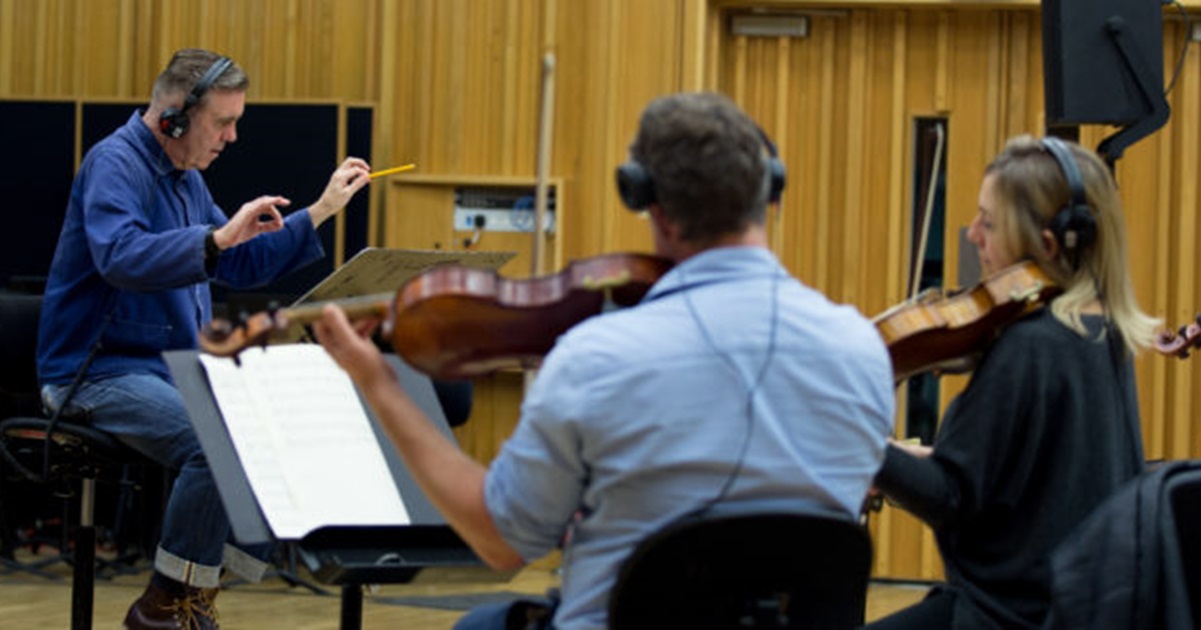
John Meirion Rea
I never thought studying music would end up with my being in prison…
…but, I am currently ‘doing time’, as I’m developing a creative response for an Arts Council of Wales ‘R&D’ based on the use of Cymraeg, and the interior soundworlds of Parc Prison in Bridgend.
The conversations, sound recordings and photographic work being captured will inform an immersive ‘Virtual Reality’ outcome, inspired, in part, by the ‘Imaginary Prisons’ of the artist Giovanni Battista Piranesi.
It is both a fascinating and forbidding environment, and my research led to a discovery of how Cymraeg’s relationship with ‘crime and punishment’ has changed over the Centuries; from the violence of the mock courts, and ritual humiliation of Y Ceffyl Pren, to the present day, in Parc.
I am also investigating how sound is used, and experienced within prisons more generally, and the effect this has as a means of control, and in the everyday existence of those ‘inside’.
The intention is to present the ‘work in progress’ outcome in the coming month or two, in the form of a VR experience and installation.
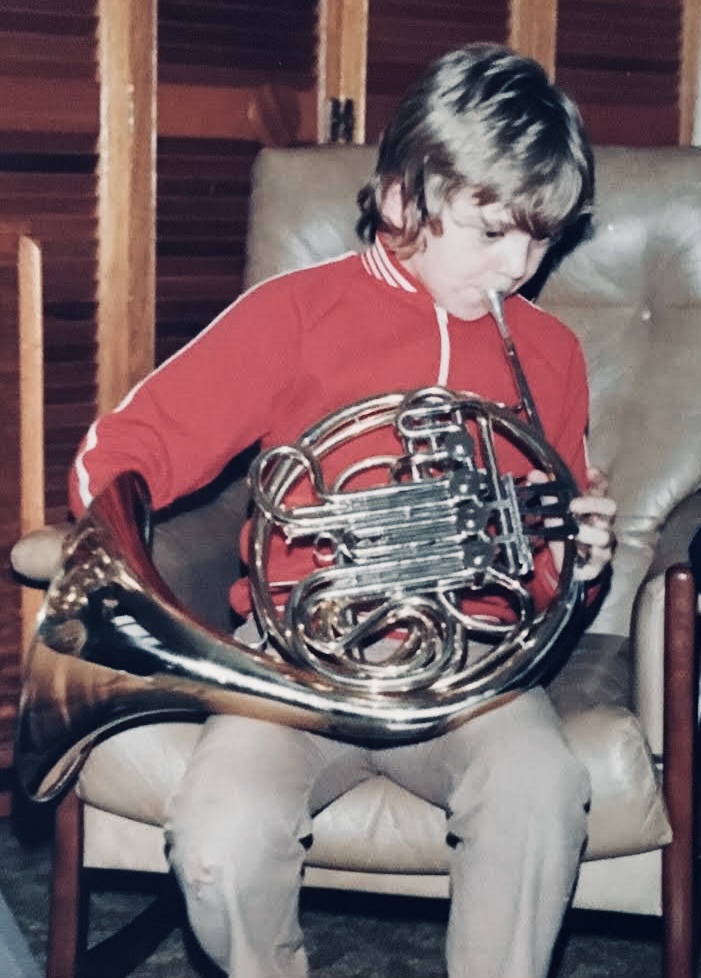
Music came into my life at the age of 8, beginning with piano lessons with Mrs Rees in Pontyclun, at 50p for an hour!
But I suppose the beginning of the real journey came with taking up the French Horn aged 11, in Ysgol Gyfun Llanhari and playing with what was then The Mid Glamorgan Youth Orchestra.
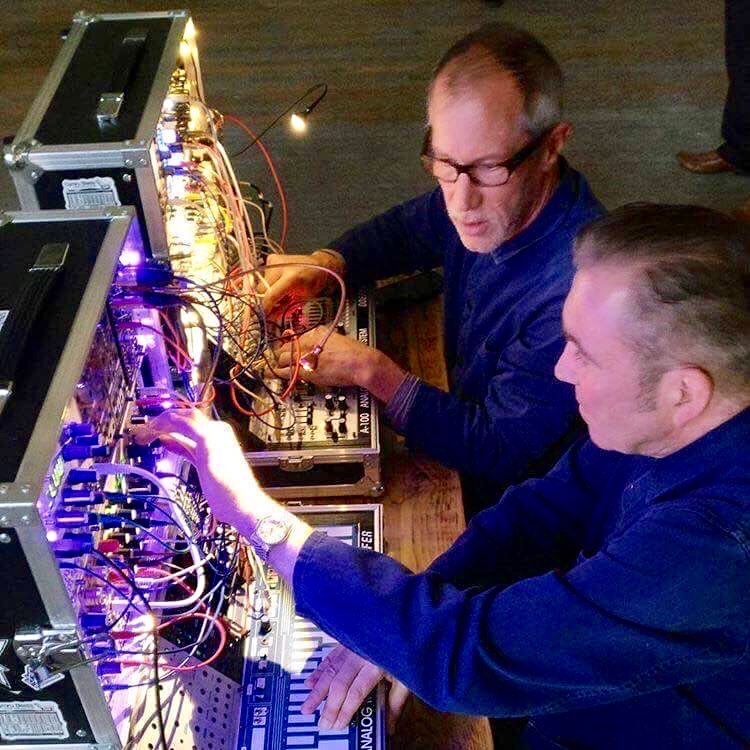
Ray Charles
I was very lucky to have supportive parents, though they had very different tastes. Martha, my mother was musical, and sang with choirs, and played piano as a BA graduate, and school teacher; but my father, though an avid listener, didn’t have musical bone in his body, despite his Italian-Welsh heritage!
I do remember endless hours in the back of the car travelling to see relatives in Blaenau Ffestiniog, listening to my father’s Ray Charles cassettes, and my mother singing along to the transcendent Gospel of the singer Mahalia Jackson.
I have definitely inherited their love for American Blues, R’n’B, and Soul, and am a keen collector of vinyl.
I’m with William Walton, who once quipped: “I prefer Bessie Smith to Hindemith”!
Fascination
I describe myself as a composer and artist, with an interest in immersive modes of presentation, and a fascination with combining sound, and music, with visual interpretation.
This approach is at the heart of the recent project Amleddau/Frequencies, a BBC Radio Cymru commission in celebration of the Centenary of the first Cymraeg ever broadcast.
The work blends historical BBC archive recordings, field-recorded soundscape, with original composition; and was aired on the same date and time as the original broadcast as a radio-artwork.
The visual interpretation was then screened in The National Museum of Wales.
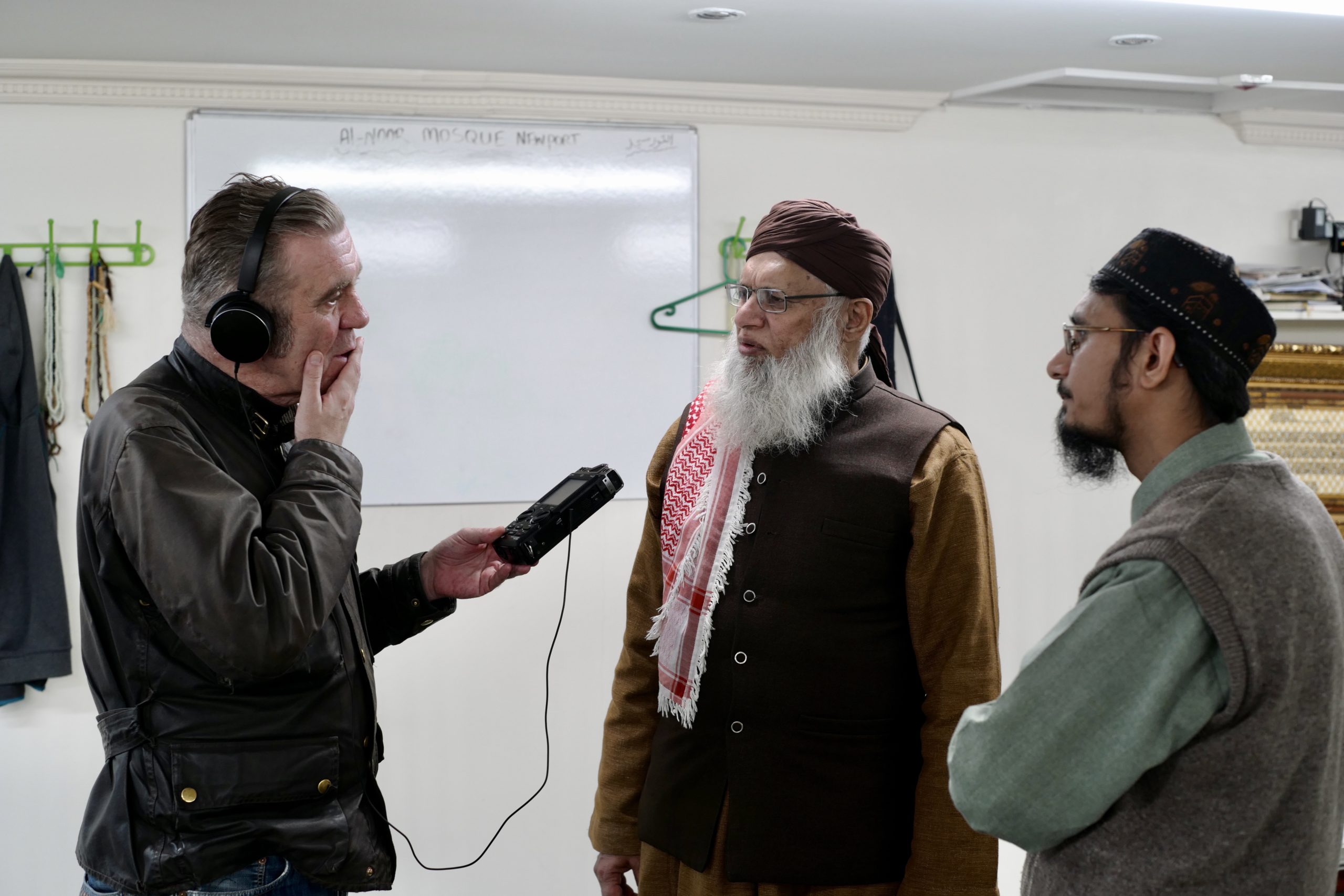
Revelation
I believe we all respond to different stimuli at different times in our lives, which is certainly true for me.
There are significant moments of revelation, that have often illuminated new paths, and approaches, and changed the way I have perceived things; as a musician, composer, and artist, but also more generally:
- Hearing a symphony orchestra perform for the first time, aged been 7 or 8. The emotional response I felt has stayed with me ever since!
- Hearing Stravinsky’s The Rite of Spring performed in St David’s Hall aged 16, an overwhelming experience!
- Discovering the music of the American ‘maverick’ composers whilst studying for my B.Mus in Cardiff University in the 1980’s. Most notable was hearing the ‘minimalist’ composers for the first time, especially Steve Reich, and I was lucky to see him perform his masterpiece Music for 18 Musicians at this time. I was also struck by the originality of Charles Ives’ music, pieces such as Central Park in the Dark, also John Adams’ Short Ride in a Fast Machine. I also encountered the writing of Pierre Schaeffer and strange new world of Musique Concrète, experimental music, also the uniqueness of John Cage – heady days!
- The live performance of Phillip Glass’ score for Godfrey Reggio’s film Koyaanisqatsi in The South Bank Centre, again in the late 80’s. I was struck by how the music and image created their own narrative, without the need for voice over, or script.
- Similarly, discovering the unique works of British composer Gavin Bryars, and the turntablist Phillip Jeck, especially The Sinking of the Titanic, and the ideas behind the ‘ambient music’ genre, through the writings of David Toop and the music released by Brian Eno’s label Obscure Records.
- Hearing my first orchestral work performed by the BBC National Orchestra of Wales on St David’s Day, my first large-scale commission, again in St David’s Hall, on my 30th Birthday! This was another overwhelming experience in what is an important venue for our City, I feel strongly that this concert hall and its wonderful acoustics should be protected.
- More recently, I have encountered the work of field-recordist and sound-artist Chris Watson, notably the album El Tren Fantasma, a work based on his journeys on trains in South America. I came across his work because of his collaboration with the Icelandic film composer Hildur Guðnadóttir on the score for the drama Chernobyl. She also collaborated with another significant influence: the composer Jóhann Jóhannsson. His score for Arrival is a turning point for the genre in my humble opinion. It’s a terrible loss to the world of music that he died so young.
- My final influence is the book The Soundscape (The Tuning of the World) by R Murray Schafer, a study of our acoustic environments, originally published in the 70s. This has led me to a discovery of ‘sonic cartographic’ ways to create, using sound, an influence on my creative process, which began with the site-specific installation and performance work Atgyfodi, a collaboration with St Fagans Museum of Welsh History and the BBC National Orchestra of Wales and cinematographer Huw Talfryn Walters.

Capital city
I decided to study music in Cardiff because I felt that I wasn’t ready to go further afield, as I wasn’t very ‘worldly wise’ at 18 years old, and it was a different time then!
Being in the Capital City seemed important to me too, because as well as being familiar, it was also a very rich cultural environment with a lot of music making and theatre.
I remember attending a lot of contemporary music concerts in the University music department, and St David’s Hall, as well as pop and rock gigs in the Students Union and Clwb Ifor Bach.
I must confess that in my late teens, seeing The Smiths perform had more appeal than cheese and wine parties around the harpsichord. All part of the journey of discovery I suppose….
Alun Hoddinott
Another obvious appeal that emerged during my time as an undergraduate was a developing interest in composition, inspired by the new music I was encountering.
As I began to develop these interests, I was very lucky to have the opportunity to study composition with the composer Prof. Alun Hoddinott CBE, which eventually led to specialising in composition for an M.Mus. under his guidance.
I always remember his love of painting, especially the work of John Piper, which adorned the walls of his study, and describing orchestration as shifting blocks of colour, something that has also stayed with me.
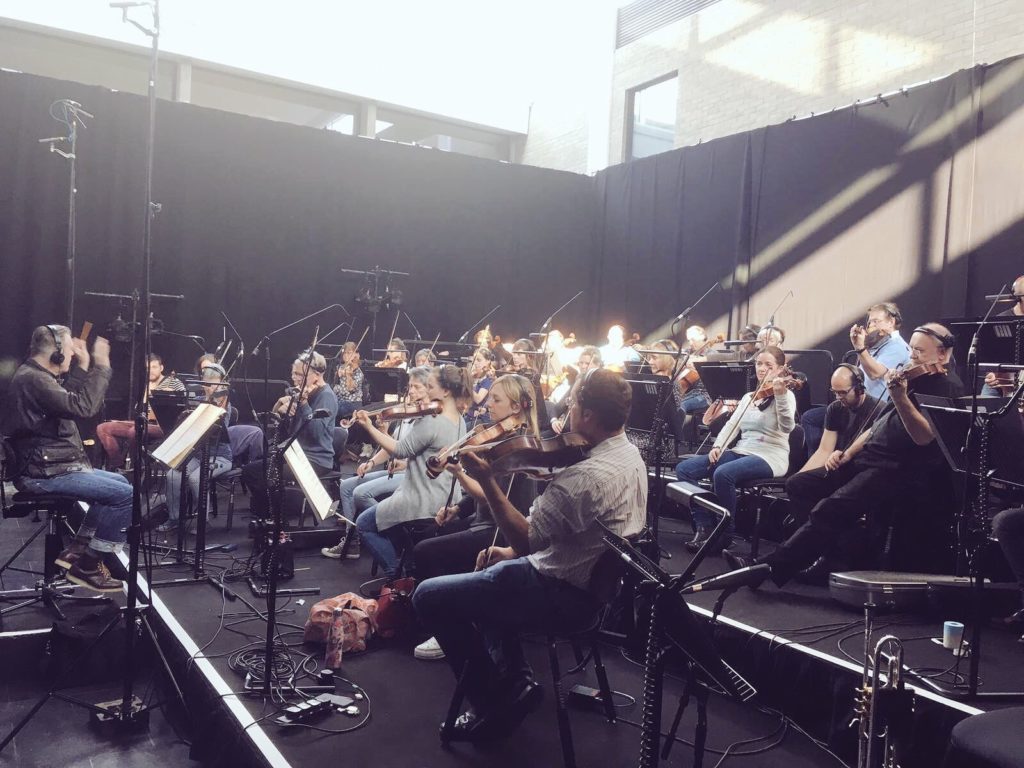
Orchestra
One of my ambitions was to compose music for an orchestra. I’m sure the urge has something to do with that initial encounter with the orchestra as a young boy, and I was lucky enough to receive my first commission to compose an Overture for ‘The BBC Welsh Symphony Orchestra’ for the St David’s Day Concert in 1994, performed in the St David’s Hall Concert, which also featured the wonderful Bryn Terfel, quite a thrilling experience!
The work, Illuminare, was inspired by the illuminated first letters seen in ancient Welsh manuscripts such as The Black Book of Carmarthen, one of the earliest texts in Cymraeg, and that the musical flourishes, and fanfares of the work were a musical equivalent to the embellished, rubricated letters of these old texts.
Care
Recent projects have included working with communities in Adamsdown and Splott, as part of the HOSPES project.
The work was commissioned by the Cardiff and Vale Health Trust, centred on the significance of The Cardiff Royal Infirmary, and the history of care in the City of Cardiff, and the transience of the streets that surround it.
It is as an investigation in image, sound and music of the Latin word hospes, meaning both ‘host’ and ‘guest’, as well as being the origin of the word ‘hospital’.
As well as the hospital, isn’t the City of Cardiff also a host, to those seeking shelter, and the care of a more accepting society, and all of us merely guests passing through?
This was a year-long investigation, spending time in the local communities, and documenting the valuable work being done in this area, and a wider idea of what ‘urban Welshness’ might be.

I enjoy collaborating and working with many media though I still have a passion for composing pure music, and collaborating on theatre, and film projects; as I have learnt more about sound-art and music’s place in a wider cultural and artistic context, I have been drawn to integrating music, sound and image and immersive presentation in a more conceptual way.
The influence of R Murray Shafer and Chris Watson can be seen in the way I use the ‘signalling function’ of archive, ‘found’, and field-recorded sound, especially in works such as Atgyfodi, and HOSPES.
Here, the whole is rooted in a cultural context, that aims to immerse the listener or viewer completely.
Support our Nation today
For the price of a cup of coffee a month you can help us create an independent, not-for-profit, national news service for the people of Wales, by the people of Wales.





Good to hear John using the word ‘Cymraeg’ instead of ‘Welsh’. That in itself says a lot about him. He always says hello to me when we pass by on the street in Cardiff, though he doesn’t know me. We’ve never talked but he seems like a really nice, unassuming sort of guy…. and obviously very talented.